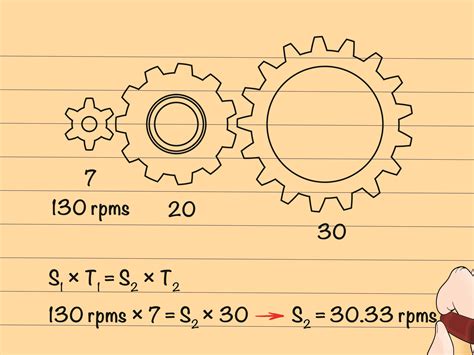How To Tell Gear Ratio
Ronan Farrow
Mar 26, 2025 · 3 min read

Table of Contents
How to Tell Gear Ratio: A Comprehensive Guide
Knowing your gear ratio is crucial for optimizing your vehicle's performance and fuel efficiency. Whether you're a seasoned mechanic or a curious car enthusiast, understanding how to determine gear ratio is an invaluable skill. This guide provides a comprehensive breakdown of different methods, catering to various levels of mechanical expertise.
Understanding Gear Ratio Basics
Before diving into the methods, let's clarify what gear ratio actually means. Simply put, gear ratio is the ratio of the number of teeth on the driven gear (output) to the number of teeth on the driving gear (input). This ratio determines how much torque is multiplied and how fast the output shaft rotates relative to the input shaft. A higher gear ratio means more torque but lower speed, while a lower gear ratio means less torque but higher speed.
Think of it like a bicycle: a lower gear (higher ratio) is easier to pedal uphill (more torque), while a higher gear (lower ratio) allows for faster speeds on flat ground.
Methods for Determining Gear Ratio
There are several ways to determine your gear ratio, depending on the accessibility of your components and your comfort level with mechanical tasks.
1. Using the Gear Teeth Count (Most Accurate)
This is the most direct and accurate method. You'll need to visually inspect the gears involved:
- Locate the gears: Identify the driving gear (usually connected to the engine) and the driven gear (connected to the output shaft).
- Count the teeth: Carefully count the number of teeth on each gear.
- Calculate the ratio: Divide the number of teeth on the driven gear by the number of teeth on the driving gear. This gives you the gear ratio.
Example: If the driven gear has 40 teeth and the driving gear has 20 teeth, the gear ratio is 40/20 = 2:1.
Important Note: This method requires access to the gears themselves, which might not always be feasible without disassembly. Safety precautions are paramount when working with mechanical components.
2. Using the Vehicle's Specifications (Easiest)
The easiest way to find your gear ratios is to consult your vehicle's owner's manual or service documentation. This usually provides a detailed specification sheet, including transmission gear ratios for each gear.
This method avoids the need for any physical inspection or calculation.
3. Measuring Axle Ratio (For Rear-Wheel Drive)
For rear-wheel-drive vehicles, the axle ratio plays a crucial role in overall gearing. The axle ratio is determined by counting the number of teeth on the ring gear and the pinion gear inside the differential.
- Locate the differential: Access to the differential is necessary for this method, potentially requiring some dismantling.
- Count the teeth: Count the number of teeth on both the ring and pinion gears.
- Calculate the ratio: Divide the number of teeth on the ring gear by the number of teeth on the pinion gear.
This ratio significantly impacts acceleration and top speed.
4. Using a Mathematical Formula (Advanced)
In some cases, you can mathematically derive the gear ratio using known parameters such as tire diameter, engine RPM, and vehicle speed. However, this method involves complex calculations and requires precise measurements. While theoretically feasible, it's less practical than the previously mentioned methods.
Why Knowing Your Gear Ratio Matters
Understanding your gear ratios provides several benefits:
- Optimized Performance: Choosing the right gear ratio enhances acceleration and power delivery.
- Improved Fuel Efficiency: Selecting appropriate gears minimizes fuel consumption.
- Troubleshooting Issues: Identifying unusual gear ratios can help in diagnosing transmission problems.
- Customization: Modifying gear ratios can customize your vehicle's performance to your specific needs (e.g., off-roading or racing).
By employing these methods, you can accurately determine your vehicle's gear ratios and leverage this knowledge to improve performance and efficiency. Remember to prioritize safety and consult professional mechanics when dealing with complex mechanical systems.
Featured Posts
Also read the following articles
| Article Title | Date |
|---|---|
| How To Value An Undivided Interest In Land | Mar 26, 2025 |
| How To Use Clobber Drain Cleaner | Mar 26, 2025 |
| Fellowes Venus 2 125 Laminator How To Open | Mar 26, 2025 |
| How To Sell Apex Account | Mar 26, 2025 |
| How A Hydraulic Lifter Works | Mar 26, 2025 |
Latest Posts
Thank you for visiting our website which covers about How To Tell Gear Ratio . We hope the information provided has been useful to you. Feel free to contact us if you have any questions or need further assistance. See you next time and don't miss to bookmark.
